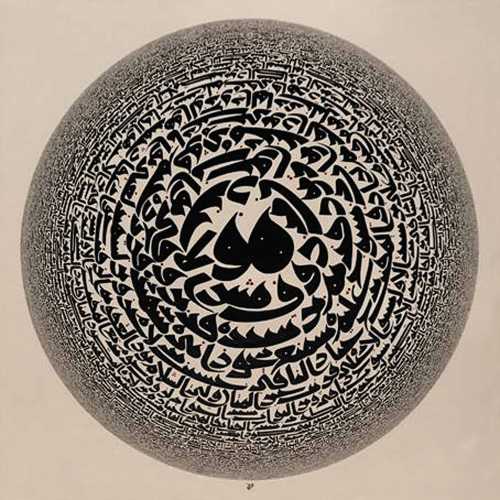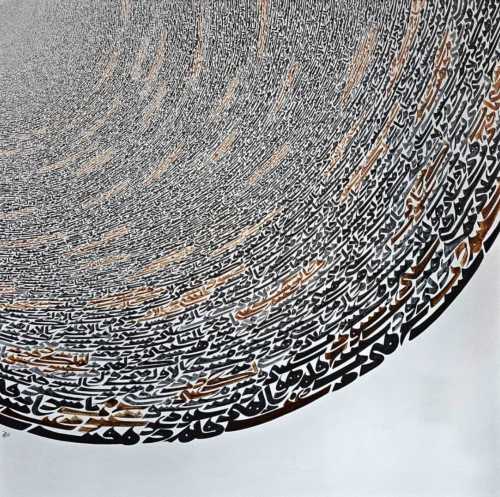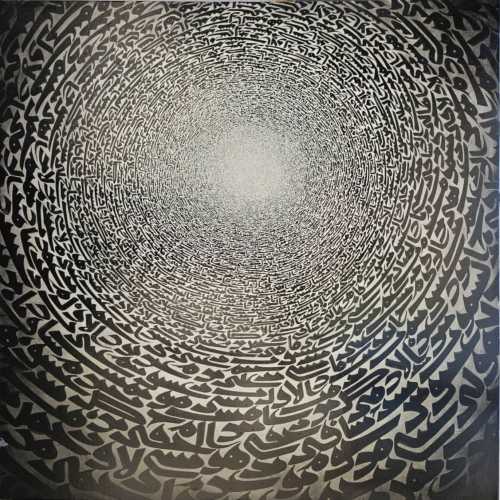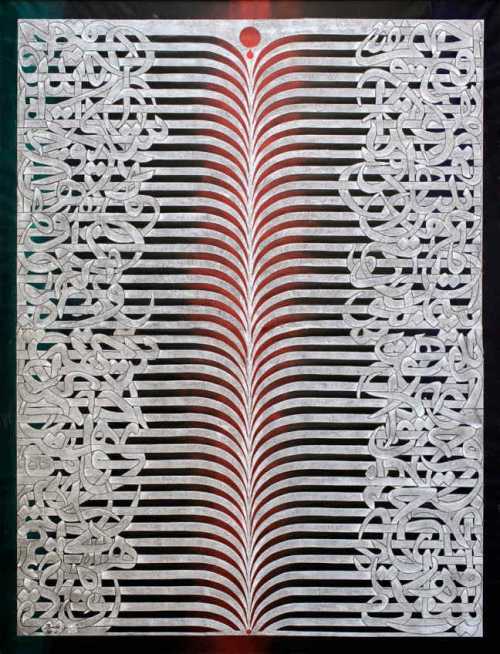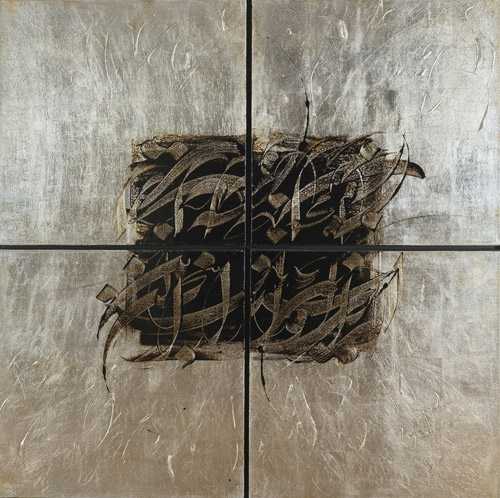- Untitled 2016
- acrylic and ink on canvas
- Painting, Calligraphy Painting
- 145 * 145 cm
- signed in Farsi (lower center)
Auction Histories
Sell at
-
Auction House
22 March 2018
Realized Price
Artwork Description
Descendent of the famous court calligrapher Mirza Karim Khoshnevish Tabhari, Azra Aghighi Bakhshayeshi is the only professional female calligraphic artist working in Iran. Born in 1968 to a literary family, Aghighi began her calligraphic training as a young girl. She was inspired by the beauty and variations of Persian letters. The artist’s upbringing and social surroundings have allowed her to persistently absorb and understand the importance of religion and this is reflected throughout her art. She is devoted to advancing this traditional art form into the contemporary 21st century expression and a new era.
Calligraphy is considered as the most beautiful of artistic expressions. It traditionally correlates to the depiction of beauty intrinsic to Creation. Some even attributed it to a divine origin. And even though calligraphy is largely based on freedom of movement and expression, to become a master of it takes meticulous training that spans over eight years. In fact a calligrapher can’t sign their works until they’ve gone through the training. It is an extremely codified art with strict and complicated rules that need to be mastered to achieve perfection.
With that said, Aghighi is the only female, professional calligrapher in Iran. In the present work, the immense canvas painted in a neutral beige color is dominated by a circular calligraphic shape. The calligraphy starts as a dense black color in the center and slowly shifts to a light black. By the time it reaches the outermost of the circle, the calligraphy is completely blurred and illegible. What’s special about this piece is that at first sight the subject looks like a spiral. However, upon closer examination, we can see that it’s actually several circles enclosed within each other.
Of her work the artist says, “These writings are whispers in my mind that do not mean too much, like a meditation. Sometimes they could be poetry, prayers, or just a conversation. I am not trying to convey spirituality with my writings. Speaking only one language creates a barrier between me and the viewer if they do not speak the same language. I am hoping to reach out to a broader audience with my art as a universal message.”
Calligraphy is considered as the most beautiful of artistic expressions. It traditionally correlates to the depiction of beauty intrinsic to Creation. Some even attributed it to a divine origin. And even though calligraphy is largely based on freedom of movement and expression, to become a master of it takes meticulous training that spans over eight years. In fact a calligrapher can’t sign their works until they’ve gone through the training. It is an extremely codified art with strict and complicated rules that need to be mastered to achieve perfection.
With that said, Aghighi is the only female, professional calligrapher in Iran. In the present work, the immense canvas painted in a neutral beige color is dominated by a circular calligraphic shape. The calligraphy starts as a dense black color in the center and slowly shifts to a light black. By the time it reaches the outermost of the circle, the calligraphy is completely blurred and illegible. What’s special about this piece is that at first sight the subject looks like a spiral. However, upon closer examination, we can see that it’s actually several circles enclosed within each other.
Of her work the artist says, “These writings are whispers in my mind that do not mean too much, like a meditation. Sometimes they could be poetry, prayers, or just a conversation. I am not trying to convey spirituality with my writings. Speaking only one language creates a barrier between me and the viewer if they do not speak the same language. I am hoping to reach out to a broader audience with my art as a universal message.”
More lots by Azra Aghighi Bakhshayeshi
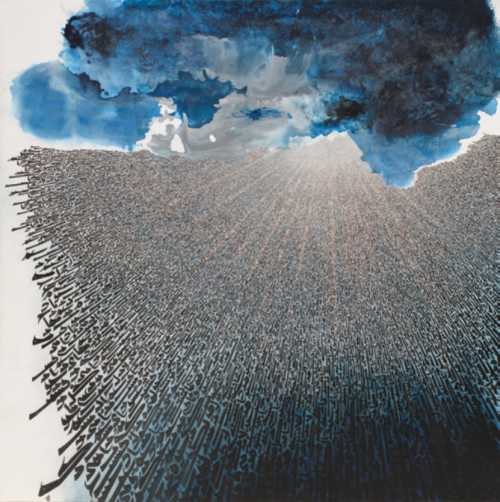
It's High Time You Returned
Realized Price
17,536 USD
Min Estimate
9,927 USD
Max Estimate
14,423 USD
Average Artwork Worth
+42.275%
Average Growth of Artwork Worth
Sales Performance Against Estimates
Average & Median Sold Lot Value
2021 - 2025
Performance vs. Estimate
2021 - 2025
Sell-through Rate
2021 - 2025
Similar Artworks
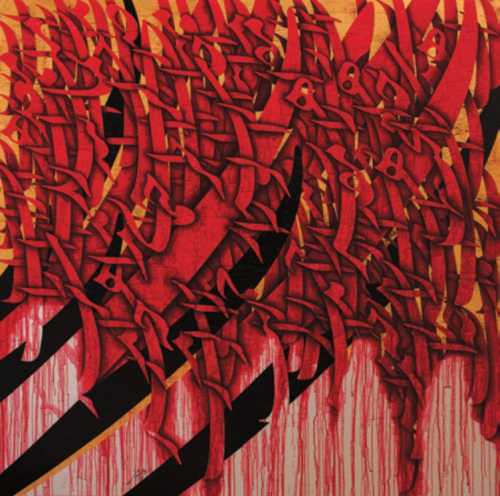
Praising Hakim Omar Khayyam
Estimation
8,000,000,000﷼
13,333 USD
-
12,000,000,000﷼
20,000 USD
Realized Price
18,700,000,000﷼
31,167 USD
87%
Sale Date
Tehran
-
5 July 2024
